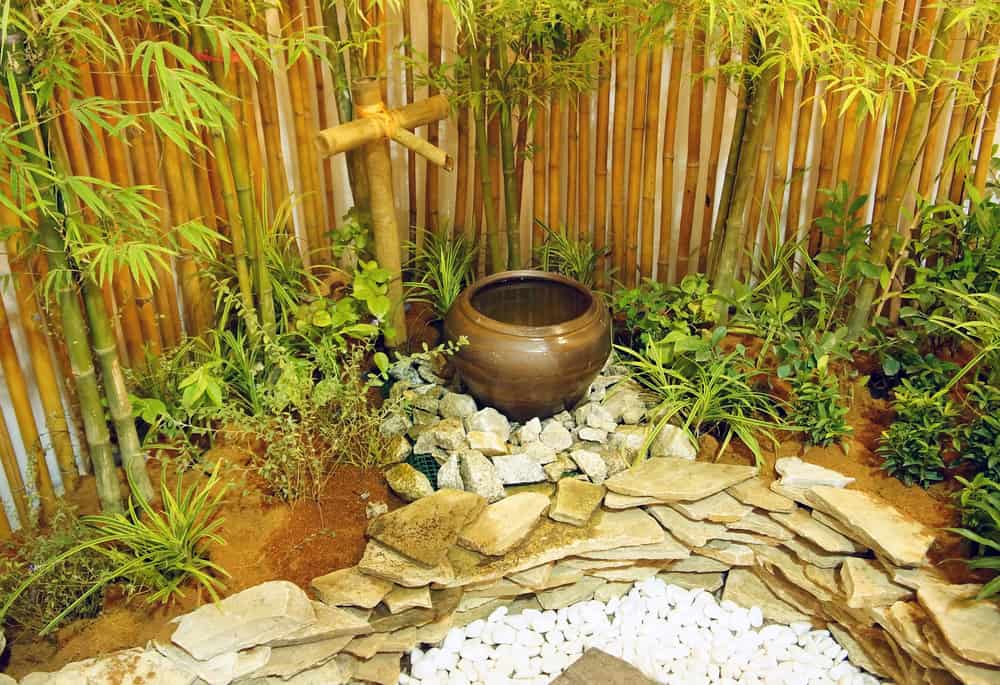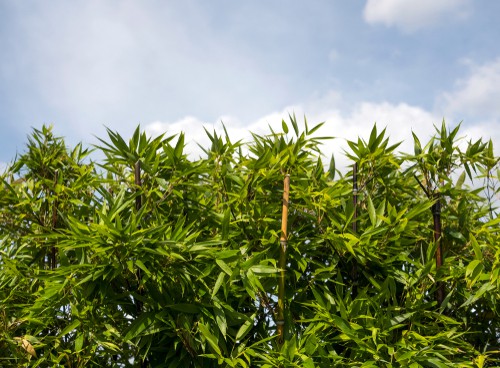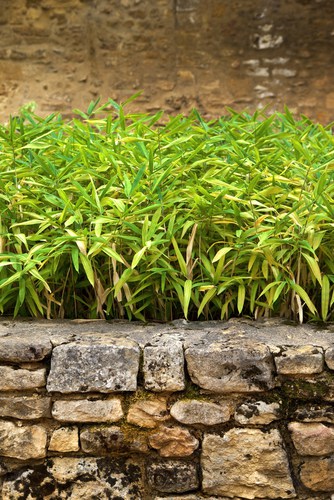Last updated on March 10th, 2022
Our site is reader supported, this means we may earn a small commission from Amazon and other affiliates when you buy through links on our site.
Bamboo is a wonderful plant to add to your garden, whether used as a hedge, screen or planted as specimen plants in a border, or grown in pots. However, some species, not all, can quickly become invasive if you don’t properly prune them. Knowing how to prune bamboo is important because it prevents the rhizomes from growing out of control.
Pruning can also be done to improve overall airflow, encourage better growth and remove side shoots, enabling the bright thick stems to stand out too. Below we go over when to prune as well as the different types of pruning.
Pruning Bamboo

Rhizome Pruning
When you prune your bamboo you will need a very sharp pair of secateurs, shears, perhaps even a spade, and a pruning saw for pruning thicker culms. When you set about thinning bamboo, you need to cut the rhizomes attempting to escape with a shovel or a set of gardening shears. Bamboo will spread to literally anything it touches so you need to prevent them from setting up new root structures and growing new shoots.
It is best to carry out this process at the beginning of autumn and cut in a line where you want your bamboo to stay, this simply helps prevent the root system from spreading. Use a shovel and cut it around the perimeter of where you want it to be, removing anything that is trying to escape that perimeter. Older rhizomes will likely sprout on their own and will need to be removed at this time. Thankfully for most species, these rhizomes are not very far below the surface so you won’t need to dig down deep. In most cases, you won’t have to dig further than the depth of a spade and you can control this growth by digging once a year to remove these older rhizomes.
Trim pruning – trench method
You can also utilise another method of pruning referred to as trimming, where you dig a trench around where you want your bamboo to grow and check it once or twice a year to see if any rhizomes have tried to make the crossing. If they have you can simply remove them.
Topping
One way of controlling the height is to cut the stems just above a culm note, which is where the branches come out of the main stems. If you cut the main stems at the desired height they will not get any taller than where you make the cut, so this is a good way to control the overall height.
Regular Maintenance
You can help your pruning efforts by removing any damaged, dead, or otherwise unattractive canes from the base once a year so that the canes have the space they need to get taller and fatter. Most bamboo plants will only live for about 15 years, so pruning on an annual basis will truly help your plant to make the most of its time.
You can also use your pruning as an opportunity to cut off the lower leaves once your plant has established itself so that it presents a striking visual impact of the canes with the leaves only on the top portion. With certain varieties, you can remove the smaller canes or remove any lower branches that obstruct the view if you prefer.
Pruning a Bamboo Hedge or Screen
With bamboo, you can effectively use them to create a good hedge, screen, or windbreak. We recommend choosing varieties that can be grown in exposed sites unless the location you want to create privacy in is a sheltered area. If your bamboo serves this purpose it can be cut or trimmed in the same way you would trim any other hedging plant. Do this once a year in the spring or the summer and remove newer shoots to control the height and the diameter of the screen, as you would do a couple of times a year with any other hedge.

Pruning Groundcover
Given how prolifically bamboo propagates on its own, it is a very popular plant to use the dwarf varieties for groundcover. If you are growing a dwarf variety you can cut it back to the ground in the early spring because this will help rejuvenate it. You can also play around with the degree to which you cut it back and take notes of how dense and short the new growth emerges so that you can decide where you prefer to cut.



